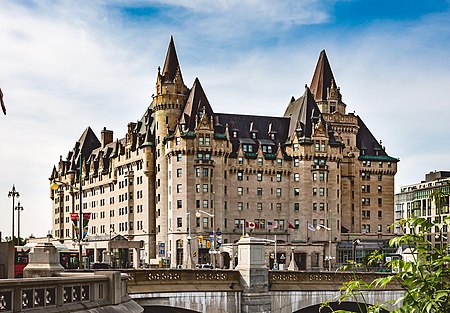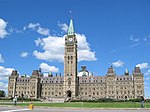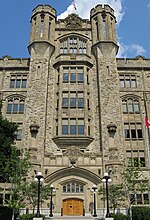Château Laurier

The Fairmont Château Laurier is a 660,000-square-foot (61,000 m2) hotel with 429 guest rooms in the downtown core of Ottawa, Ontario, Canada, located near the intersection of Rideau Street and Sussex Drive and designed in a French Gothic Revival Châteauesque style to complement the adjacent Parliament buildings. The hotel is above the Colonel By Valley, home of the Ottawa Locks of the Rideau Canal, and overlooks the Ottawa River. The main dining room (now the Laurier Room) overlooks Major's Hill Park. The reception rooms include the Wedgewood-blue Adam Room; the Laurier Room defined by Roman columns; the Empire-style ballroom and the Drawing Room featuring cream and gold plaster ornament. The hotel was designated a national historic site in 1980.
Excerpt from the Wikipedia article Château Laurier (License: CC BY-SA 3.0, Authors, Images).Château Laurier
Rideau Street, (Old) Ottawa Rideau-Vanier
Geographical coordinates (GPS) Address External links Nearby Places Show on map
Geographical coordinates (GPS)
| Latitude | Longitude |
|---|---|
| N 45.425566666667 ° | E -75.695108333333 ° |
Address
Fairmont Château Laurier (Château Laurier)
Rideau Street 1
K1N 8W5 (Old) Ottawa, Rideau-Vanier
Ontario, Canada
Open on Google Maps





